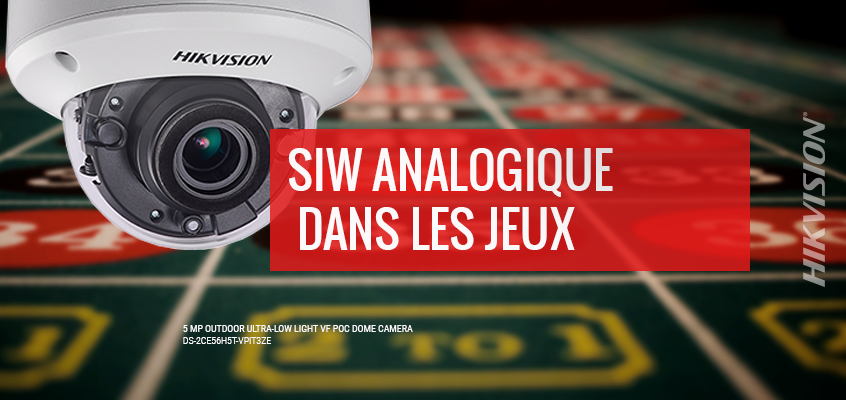Un article de Hikvision Analysant pourquoi le nouvel Analog HD est un bon pari pour les opérateurs de casino

Dans l'article de SecurityInfoWatch.com, ‘’Analog in Gaming: A Good Bet " Scott Bartlett, responsable du développement commercial du jeu chez Hikvision, explique pourquoi la technologie HD analogique peut aider les casinos à tirer parti de l'infrastructure existante pour améliorer la surveillance vidéo tout en réduisant les temps morts.
« Même si la mise à niveau vers l'analogique peut sembler paradoxale, les nouveaux systèmes HD analogiques sont performants, abordables et offrent des images exceptionnelles et des capacités de stockage parfaitement adaptées aux besoins des casinos. Ils peuvent être installés relativement facilement, nécessitent un temps d'immobilisation minimal et disposent de fonctionnalités permettant aux propriétaires de casino de satisfaire aux exigences réglementaires complexes et variées », a déclaré Bartlett, dans l'article.
Caractère unique du jeu vertical Les casinos ont une large empreinte, sont toujours ouverts et hautement réglementés, souvent avec des réglementations différentes dans chaque État. Les propriétaires de casino ne veulent pas de temps d'arrêt pour les mises à niveau du système. Tous ces facteurs et d’autres encore plus méchants : « Les intégrateurs de sécurité ne s’immiscent pas dans le travail des casinos - ils s’y spécialisent ».
Améliorations apportées à la HD analogique La continuité des opérations et la réticence à fermer certaines parties du casino pour tirer le câble font de la HD analogique une option très attrayante pour la modernisation du casino. Bartlett a déclaré dans l'article qu'un "casino cherchant à améliorer un système à 1 000 caméras, le coût du câble seul (en supposant que la course moyenne par caméra est de 200 pieds) serait d'environ 50 000 $ et que la main-d'œuvre nécessaire pour installer un nouveau câble serait d'environ 150 000 $ environnement non syndiqué. » Analog HD permet de réaliser des économies en réduisant les coûts de câblage et en réutilisant l’infrastructure de câble existante.
De plus, la qualité HD analogique s’est considérablement améliorée, de sorte que les économies de coûts n’imposent pas un sacrifice pour la vidéo haute résolution et les images. Hikvision propose des solutions HD analogiques avec une résolution de 5MP à 30 images par seconde sur un câble coaxial, avec l’intention de proposer une résolution 4K vers la fin de 2018.
Bartlett est le responsable du développement des activités de jeux pour Hikvision USA. Auparavant, il a dirigé pendant plus de 20 ans une entreprise d’intégration spécialisée dans les jeux et a travaillé dans des centaines de casinos en Amérique du Nord et dans le monde.
Pour lire l'article en entier, cliquez sur ce lien.
